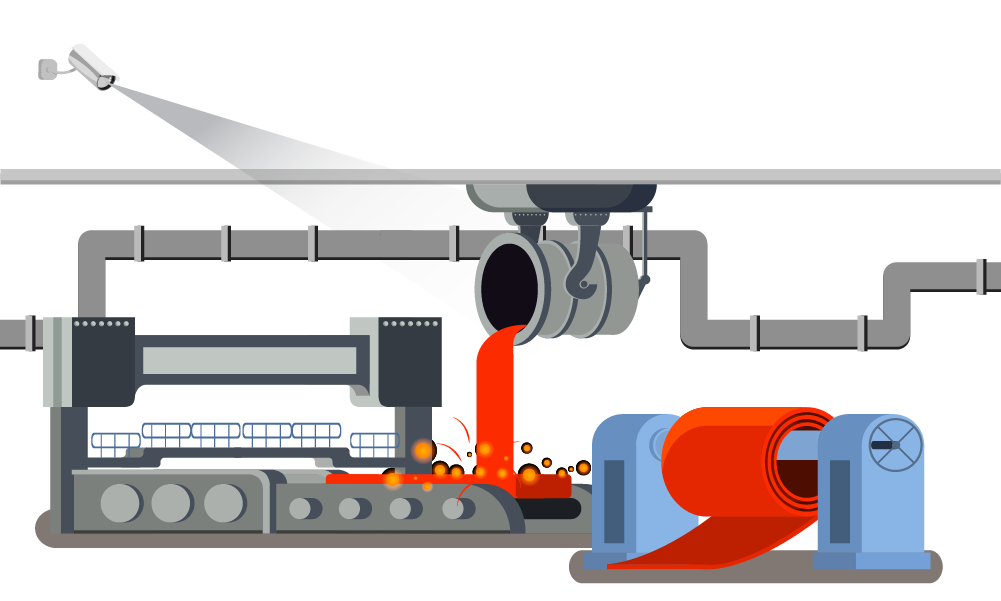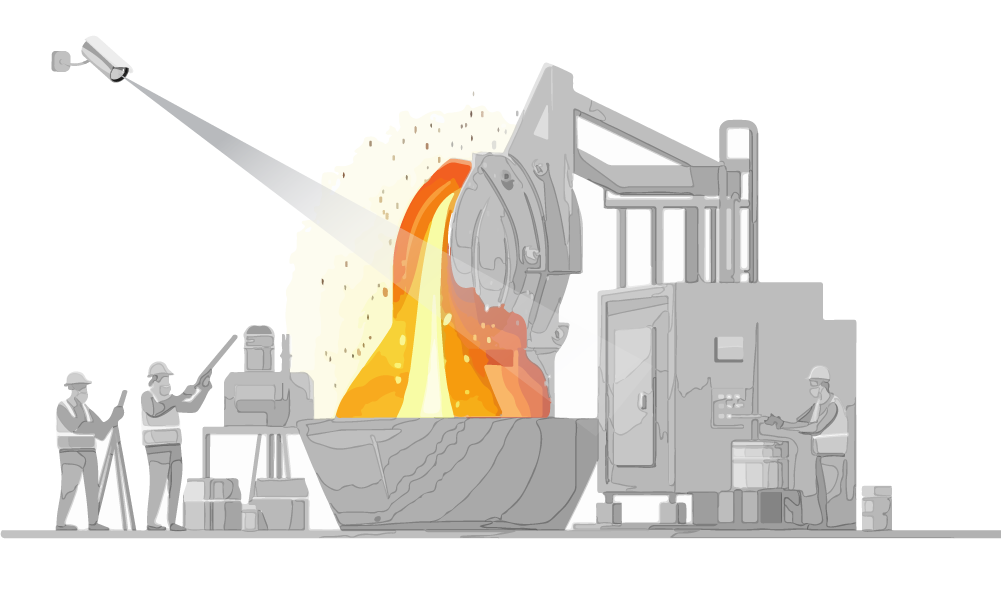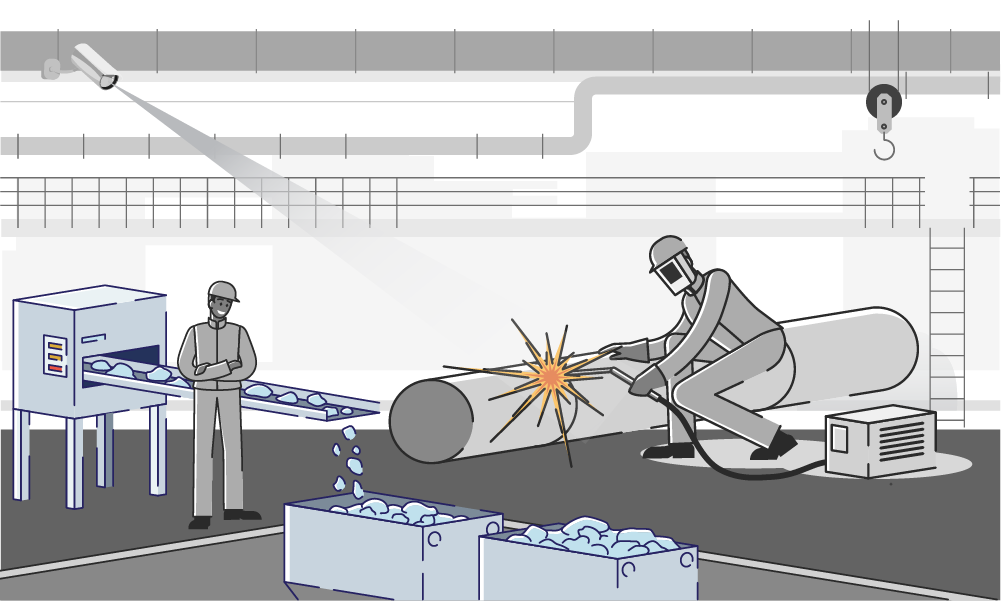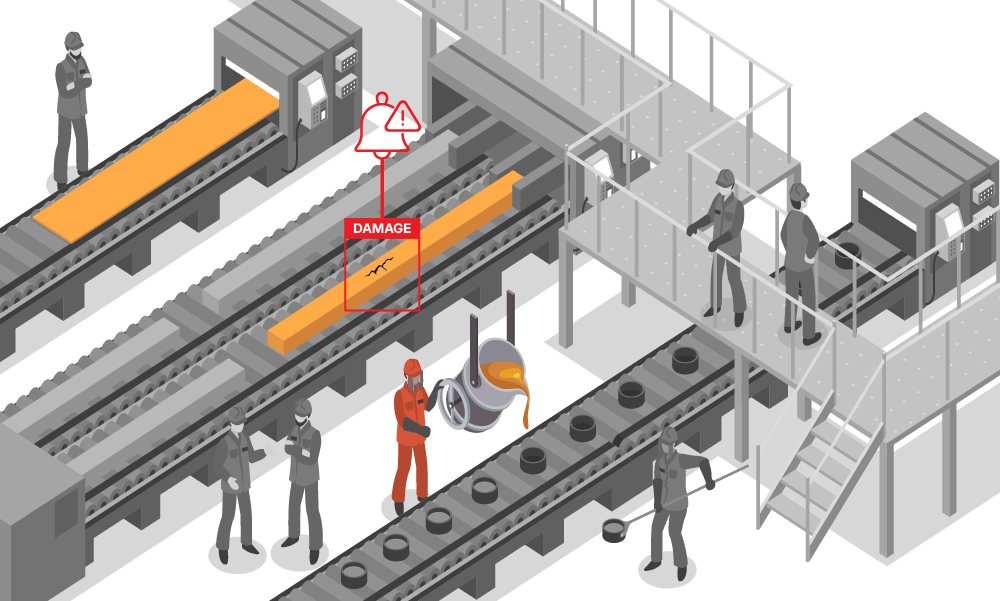Ladle Movement Tracking
Track molten metal movement with precision. Prevent spills, reduce risk, and enhance casting control.


In steel plants, ladles carry molten metal at extreme temperatures. Any delay, misalignment, or deviation during transfer can result in accidents, production loss, or structural damage. AI-powered Ladle Movement Tracking ensures real-time visual tracking of ladles from furnace to caster, monitoring position, speed, alignment, and stoppage. It reduces manual dependency and boosts safety during the most hazardous phase of steelmaking.
Human oversight during ladle movement is inconsistent, especially in high-heat, low-visibility areas.
Improper ladle alignment or delay can lead to defective casting or spillage.
The area around ladle transfer is among the most dangerous, errors can be catastrophic.
No centralized way to track ladle movement from furnace to pouring station.
Constant location visibility of each ladle along transfer paths using AI-based vision.
The system notifies operators when ladles deviate from preset alignment zones.
Detects unusual speed variations that indicate mechanical issues or operator error.
Designed to function accurately under low lighting, glare, and smoky environments.


Every steel plant has unique ladle paths, from furnace, through transfer bays, to casting points. We start by mapping your ladle track layouts, transfer intervals, and critical zones (e.g., turning points, elevation changes).
Specialized thermal-resistant cameras are placed along the route to cover overhead cranes, rail paths, and pouring bays, ensuring no blind spots in motion tracking.
We collect video data of standard vs. abnormal ladle movements (e.g., misaligned pour, idle time, speed spikes). This is used to train a motion-pattern AI model specifically for your plants environment.
The AI model is connected with your SCADA or DCS system. When unusual ladle behavior is detected (e.g., excessive vibration, drift, or delay), alerts are triggered on operator screens, with optional auto-shutdown triggers.
Stay updated with the trending and most impactful tech insights. Check out the expert analyses, real-world applications, and forward-thinking ideas that shape the future of AI Computer Vision and innovation.
Collaboration creates a story. Some are born from timing, others from shared ambition. But the partnership between WebOccult and Deeper-i began from something subtler, a mutual belief that intelligence should live closer to the world it serves. For years, Vision AI has been mastering the art of seeing, while Edge AI has been perfecting the […]

CEO & Co-founder
Any object that leaves a factory belt carries an identity. It may appear as a string of numbers etched into metal, a barcode printed on paper, or a label attached to packaging or glass material. Together, these small symbols form the nervous system of modern industry. They track movement, record responsibility, and ensure that everything […]

CEO & Co-founder
Every city breathes in patterns. Cars move, pause, and disperse in a rhythm that repeats itself through hours and seasons. Beneath this rhythm lies a kind of language, the pulse of motion that defines how urban life organizes itself. Yet, for all the technology that has reshaped cities, one of the simplest and most visible […]

CEO & Co-founder